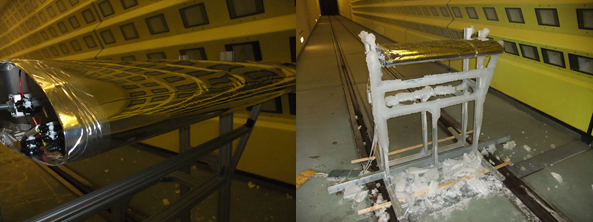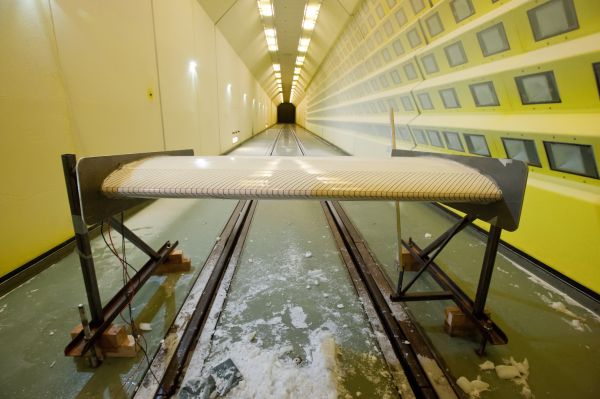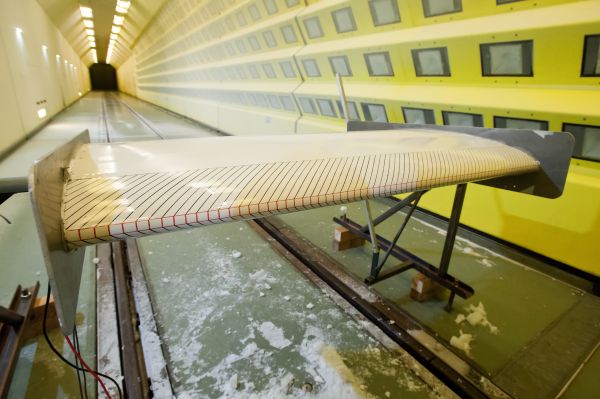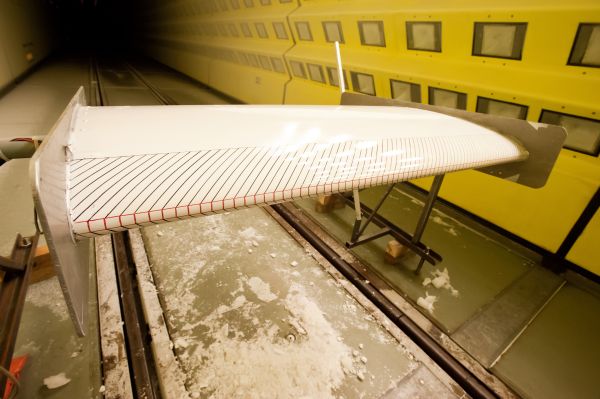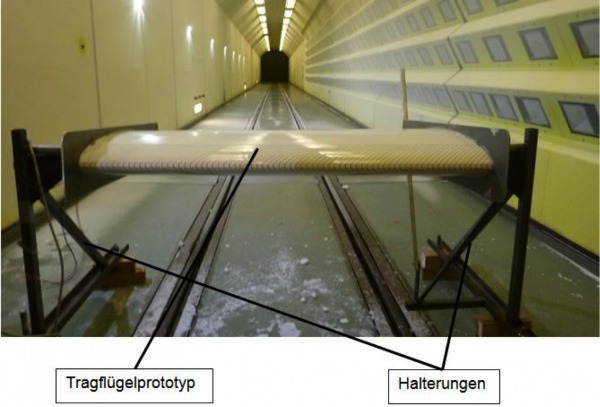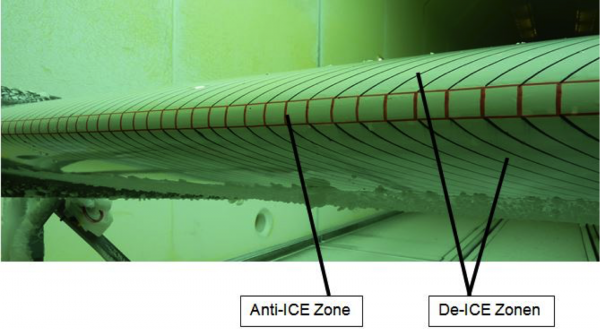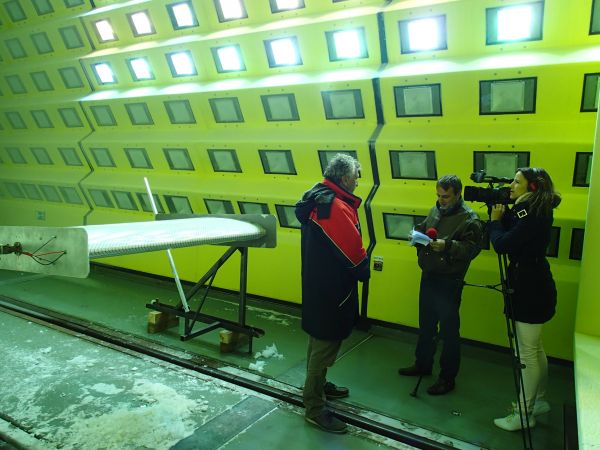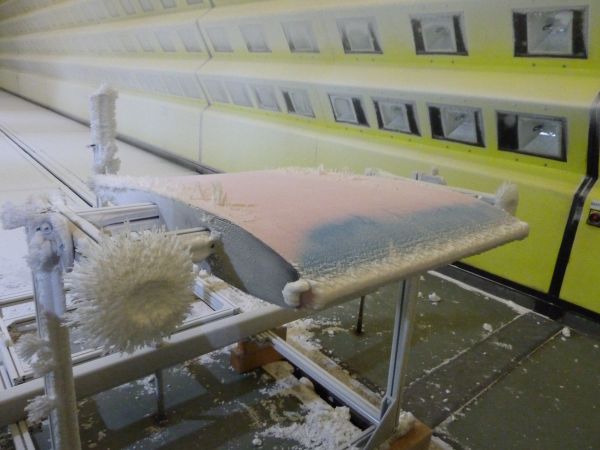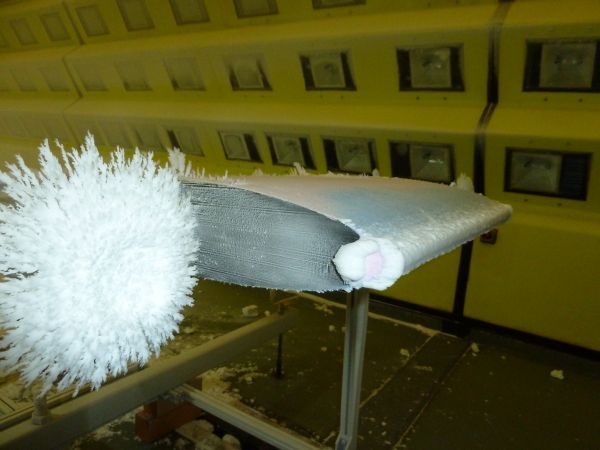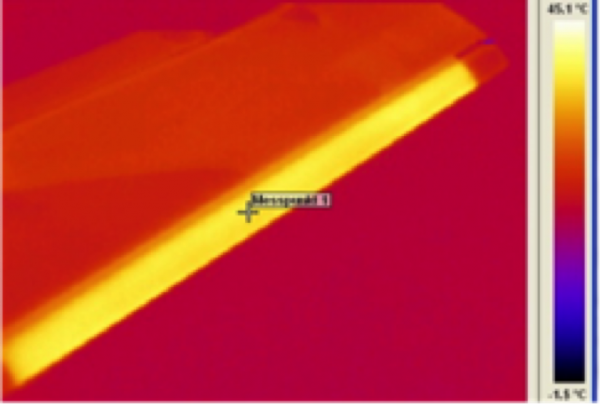eWING_DE-ICER - Development of an Energy-Efficient Electrothermal De-icing System for Wing Leading Edges in Aviation
Short Description
Motivation
In previous research projects, the basics of an electrothermal multi-zone de-icing system were studied. Based on these findings, a 1: 1 scaled functional prototype of the de-icing system will be investigated and constructed. The simulation models and test methods required for the energy-optimised design of such de-icing systems will be developed and validated by means of small-scaled tests.
Objectives
- To research an efficient electrothermal de-icing system.
- To develop and validate simulation models for the design of electrothermal de-icing systems.
- To verify the functionality in the icing wind tunnel of FH JOANNEUM (small-scale tests).
- To verify the functionality of a 1:1 scaled prototype at RTA.
Content
Within the scope of the eWING_DE-ICER project, a method for developing energy-optimised de-icing systems for wing leading edges, based on a thermoelectric heating system, is to be developed. In addition to the development of forecasting models for the optimal design of all components involved, different prototypes are to be set up as in the model, as well as in full-scale and tested in various icing wind tunnels.
Methodology
- Development of analytical simulation models for the design of electrothermal de-icing systems.
- Validation of the simulation models on a small scale.
- Structure of a 1:1 scaled functional prototype.
- Functionality verification in the icing wind tunnel - proof of concept.
Outcome
Aviation Forum Austria 2016: eWing
The video is provided via Youtube , a connection to the servers of Youtube is established (see privacy policy).
Villinger aircraft ice protection
The video is provided via Youtube , a connection to the servers of Youtube is established (see privacy policy).
Project Partners
- IESTA - Institut für innovative Energie- & Stoffaustauschsysteme - Coordinator
- FH JOANNEUM GmbH
- qpunkt GmbH
- RTA Rail Tec Arsenal Fahrzeugversuchsanlage GmbH
- Villinger GmbH
Funding program: TAKE OFF

